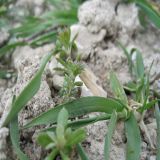Blog: Switching herbicide strategies from spring to autumn
 There are very good reasons why most farmers schedule broad-leaved weed control applications for the spring.
There are very good reasons why most farmers schedule broad-leaved weed control applications for the spring.
Warmer weather, more daylight hours and the convenience of tank mixing herbicides are three of them.
But there are significant benefits to taking out some key problem weeds in the autumn. It’s an alternative strategy, but one that bears consideration.
At a very basic level, targeting weeds when they are smaller makes it easier to achieve good control.
You are also removing the threat of competitive weeds robbing crops of their yield potential.
There may be less obvious gains too. As recently as 2018 we experienced an almost non-existent spring, forcing farmers to rush around to catch up with fieldwork using big, complicated tank mixes when the weather relented.
Hindsight is a wonderful thing, but knocking out the difficult autumn germinating broad-leaved weeds such as cleavers, fumitory, poppy, cranesbill, groundsel, mayweed and volunteer oilseed rape in the autumn would have eased the pressure on the sprayer.
Of course strategies need to suit the farming operation, and the weather. British autumns are changeable, cold and nearly always wet.
Perhaps the reason many farmers have a spring weed control mindset is because that’s all that has been possible with the chemistry at their disposal.
It wasn’t until the introduction of Zypar in 2017 – a herbicide based on our breakthrough molecule Arylex Active – that growers could have the confidence to re-think their strategies.
Before that the reliability of broad-leaved products to perform in cold or variable temperatures has traditionally put a lot of growers off.
But chemistry moves on, and we now have the opportunity to get these key problem weeds early. Our research consistently demonstrates that hitting weeds when they are small leads to better results both in terms of weed control and, ultimately, yield.
You can read this update from Corteva on TFF's AGVendor...
Warmer weather, more daylight hours and the convenience of tank mixing herbicides are three of them.
But there are significant benefits to taking out some key problem weeds in the autumn. It’s an alternative strategy, but one that bears consideration.
At a very basic level, targeting weeds when they are smaller makes it easier to achieve good control.
You are also removing the threat of competitive weeds robbing crops of their yield potential.
There may be less obvious gains too. As recently as 2018 we experienced an almost non-existent spring, forcing farmers to rush around to catch up with fieldwork using big, complicated tank mixes when the weather relented.
Hindsight is a wonderful thing, but knocking out the difficult autumn germinating broad-leaved weeds such as cleavers, fumitory, poppy, cranesbill, groundsel, mayweed and volunteer oilseed rape in the autumn would have eased the pressure on the sprayer.
Of course strategies need to suit the farming operation, and the weather. British autumns are changeable, cold and nearly always wet.
Perhaps the reason many farmers have a spring weed control mindset is because that’s all that has been possible with the chemistry at their disposal.
It wasn’t until the introduction of Zypar in 2017 – a herbicide based on our breakthrough molecule Arylex Active – that growers could have the confidence to re-think their strategies.
Before that the reliability of broad-leaved products to perform in cold or variable temperatures has traditionally put a lot of growers off.
But chemistry moves on, and we now have the opportunity to get these key problem weeds early. Our research consistently demonstrates that hitting weeds when they are small leads to better results both in terms of weed control and, ultimately, yield.
You can read this update from Corteva on TFF's AGVendor...





